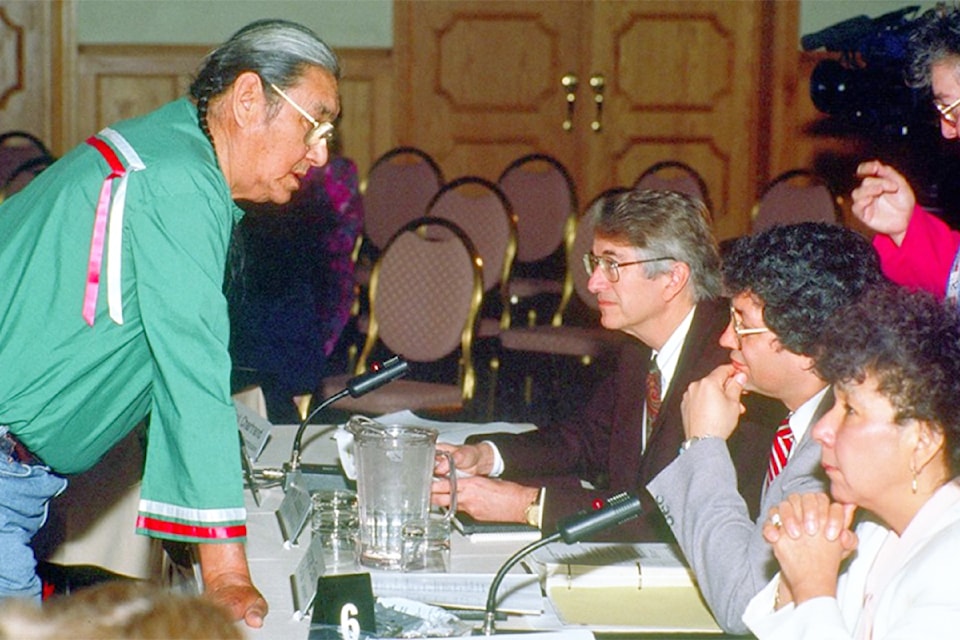Although many Canadians tend to think of the residential school system as a shocking artifact of our distant past, the last one was still operating less than 30 years ago.
In 1996, the Gordon Reserve Indian Residential School near Punnichy, Saskatchewan, the last of the government-run institutions, finally closed its doors and the main building was demolished.
That year was also the year the Royal Commission on Aboriginal Peoples issued its final report. Before issuing the report, the commission recommended establishing a National First Peoples Day and 1996 was also the year then-Governor General Romeo Leblanc proclaimed June 21 as the inaugural National Aboriginal Peoples Day (now National Indigenous Peoples Day).
Calls for such a day long pre-date its establishment. According to rabble.ca, Jules Sioui, an activist who established the North America Indian Government movement, affirmed June 21 as Indian Day in 1945.
In 1982, the National Indian Brotherhood (now the Assembly of First Nations) called for National Aboriginal Solidarity Day on June 21 and in 1995, the Sacred Assembly, a national conference of Indigenous and non-Indigenous people chaired by Elijah Harper, called for a national holiday to celebrate the contributions of Indigenous peoples.
Although perhaps not directly attributable to either the royal commission or National Aboriginal Peoples Day, the closure of the Gordon school (officially known as Gordon Residence) was a product of the times.
Established in 1991 with four non-indigenous and three Indigenous members, the Royal Commission set out to answer one overriding question: "What are the foundations of a fair and honourable relationship between the Aboriginal and non-Aboriginal people of Canada?"
They wrote:
We began our work at a difficult time.
- It was a time of anger and upheaval. The country's leaders were arguing about the place of Aboriginal people in the constitution. First Nations were blockading roads and rail lines in Ontario and British Columbia. Innu families were encamped in protest of military installations in Labrador. A year earlier, armed conflict between Aboriginal and non-Aboriginal forces at Kanesatake (Oka) had tarnished Canada's reputation abroad – and in the minds of many citizens.
- It was a time of concern and distress. Media reports had given Canadians new reasons to be disturbed about the facts of life in many Aboriginal communities: high rates of poverty, ill health, family break-down and suicide. Children and youth were most at risk.
- It was also a time of hope. Aboriginal people were rebuilding their ancient ties to one another and searching their cultural heritage for the roots of their identity and the inspiration to solve community problems.
Their five-volume, 4,000 page final report, based on 178 days of public hearings, 96 community, consultation with dozens of experts, scores of commissioned research studies and review of numerous past inquiries and reports, made 440 recommendations calling for wholesale change to the relationships between Indigenous and non-indigenous people and governments in Canada.
"Our central conclusion can be summarized simply: The main policy direction, pursued for more than 150 years, first by colonial then by Canadian governments, has been wrong," they wrote.
The Commission envisioned an aggressive and overly optimistic 20-year timeline to accomplish the new relationship.
Progress has been made, but many of the issues the commission set out to address remain unresolved.
Nevertheless, National Indigenous Peoples Day endures as a symbol of the endurance of Indigenous culture in Canada and a beacon of hope that the noble goal of a just and equitable relationship is achievable.
